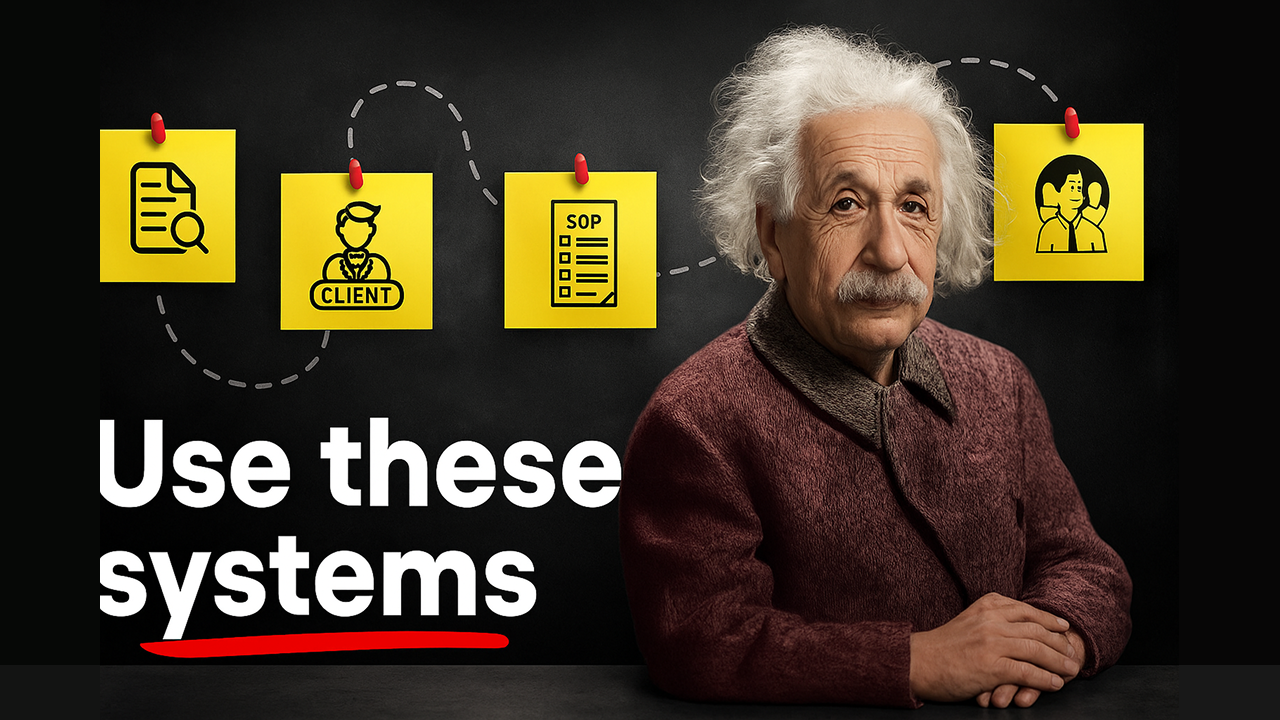Building Content as Infrastructure: The PulseFrame Studios Content OS
"Content is code. Ship, version, refactor." This isn't just a catchy phrase—it's the foundational philosophy behind PulseFrame Studios' revolutionary approach to B2B SaaS content marketing. By treating content as infrastructure rather than individual assets, our clients generate 40+ pieces of content from a single founder interview while maintaining consistency, quality, and strategic alignment.
The Infrastructure Mindset Shift
Traditional Content Approach:
Content as Infrastructure:
The PulseFrame Studios Content OS Architecture
Our Content Operating System consists of four core components that work together to create a scalable, efficient content machine:
1. Strategy Vault 🏛️
The Strategy Vault serves as your content's foundational layer, containing:
Brand Positioning Framework:
Audience Intelligence:
Content Pillars:
Messaging Architecture:
2. Idea Kanban 📋
The Idea Kanban creates a continuous content pipeline with five stages:
Backlog:
Research:
In Progress:
Review:
Ready to Ship:
3. Asset Library 📚
The Asset Library functions as your content component system:
Modular Content Blocks:
Visual Asset Repository:
Data and Research Bank:
Content Templates:
4. Distribution Calendar 📅
The Distribution Calendar orchestrates multi-channel content deployment:
Channel-Specific Scheduling:
Cross-Channel Amplification:
Performance Tracking:
The 40+ Assets from One Interview Framework
Here's how we transform a single 60-minute founder interview into a comprehensive content ecosystem:
Phase 1: Content Extraction (Week 1)
Primary Assets:
Phase 2: Long-Form Content Creation (Week 2)
Pillar Content:
Phase 3: Medium-Form Content Development (Week 3)
Supporting Content:
9-15. LinkedIn articles (7 pieces, 800-1,200 words each)
16-20. Email newsletter series (5-part sequence)
21-25. Medium blog posts (5 pieces, 600-800 words each)
Phase 4: Short-Form Content Production (Week 4)
Micro-Content:
26-35. Social media posts (10 LinkedIn posts)
36-40. Twitter thread series (5 threads)
41-45. Instagram carousel posts (5 carousels)
46-50. Quote graphics and visual assets (5 designs)
Phase 5: Interactive and Multimedia Content (Ongoing)
Enhanced Formats:
Content Versioning and Iteration
Like software development, content requires versioning and continuous improvement:
Version Control System:
Continuous Improvement Process:
Technology Stack for Content OS
Core Platforms:
AI-Powered Tools:
Analytics and Optimization:
Implementation Roadmap
Month 1: Foundation Building
Week 1-2: Strategy Vault setup and brand framework development Week 3-4: Idea Kanban implementation and initial content pipeline creationMonth 2: Asset Library Development
Week 1-2: Template creation and modular content block development Week 3-4: Visual asset repository setup and design system implementationMonth 3: Distribution and Optimization
Week 1-2: Distribution calendar setup and cross-channel integration Week 3-4: Performance tracking implementation and optimization workflowsMeasuring Content OS Success
Efficiency Metrics:
Business Impact Metrics:
Common Implementation Challenges and Solutions
Challenge 1: Team Resistance to Systematic Approach
Solution: Start with pilot projects and demonstrate quick wins before full implementation.Challenge 2: Initial Setup Time Investment
Solution: Phase implementation over 90 days with immediate value delivery at each stage.Challenge 3: Maintaining Content Quality at Scale
Solution: Implement robust review processes and quality control checkpoints.Challenge 4: Technology Integration Complexity
Solution: Begin with simple tools and gradually add complexity as processes mature.The Future of Content Infrastructure
As AI and automation technologies advance, Content OS capabilities will expand:
Predictive Content Planning: AI will predict content needs based on business cycles and market trends Automated Asset Generation: AI will create first drafts and variations automatically Dynamic Content Optimization: Real-time content adjustments based on performance data Integrated Attribution Modeling: Complete content journey tracking and ROI measurement
Getting Started with Your Content OS
Ready to transform your content marketing from ad-hoc creation to systematic infrastructure? Here's how PulseFrame Studios can help:
The companies that treat content as infrastructure will dominate their markets. Those that don't will struggle to keep up.
[Book a call with PulseFrame Studios](/book-call) to discover how our Content OS can transform your B2B SaaS content marketing from cost center to revenue driver.
Ready to Implement These Strategies?
Join Series A-C SaaS companies getting 3x more leads with 62% lower CAC through our proven AI-first approach.
